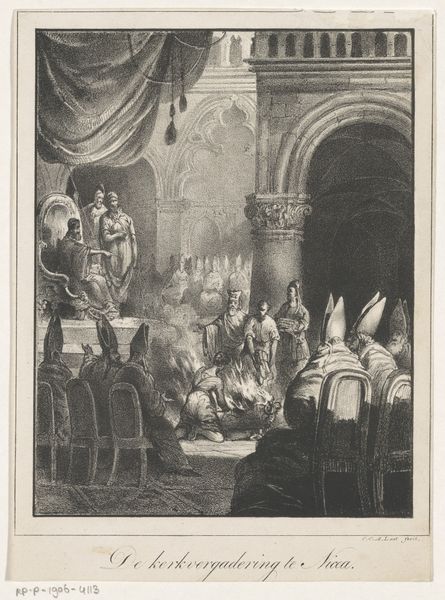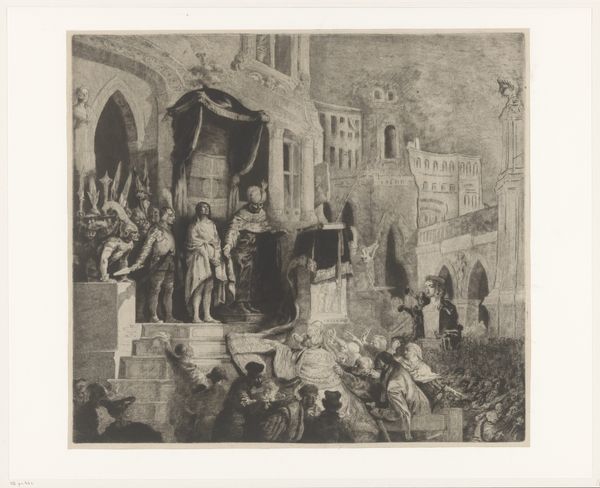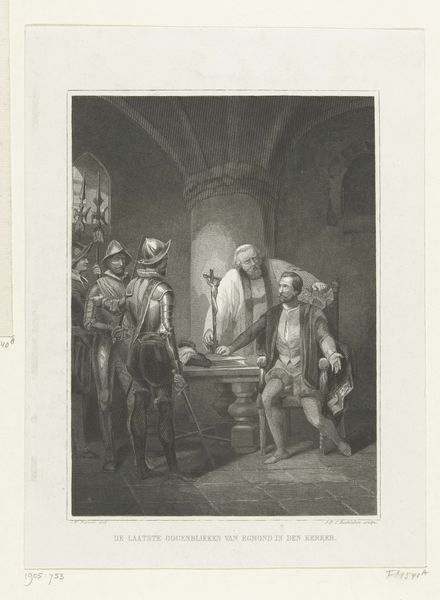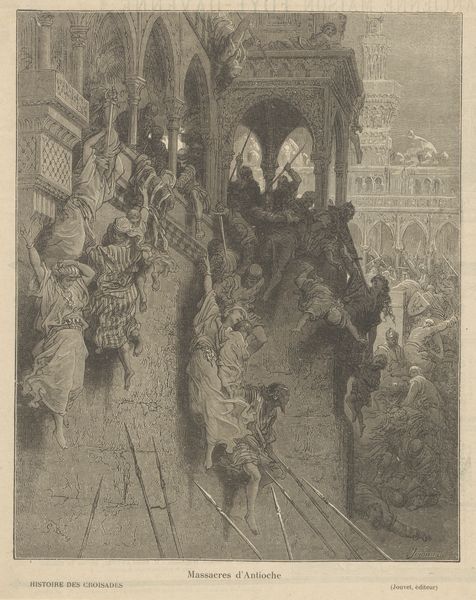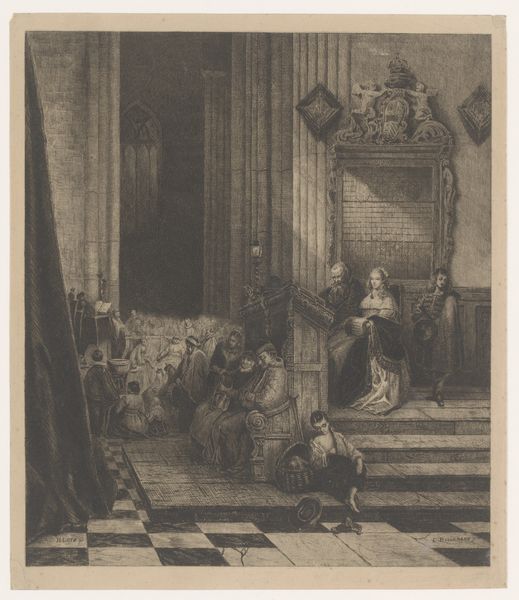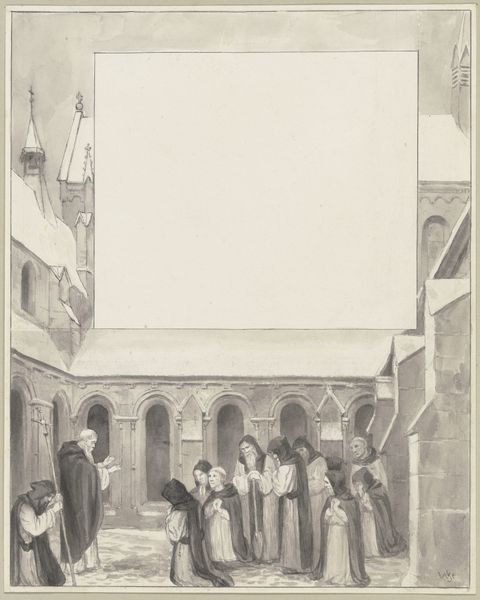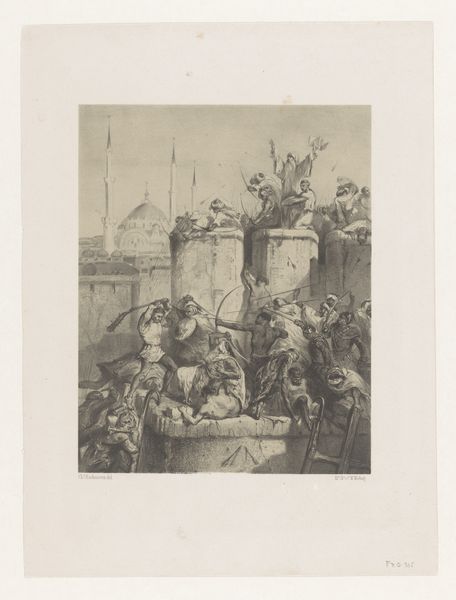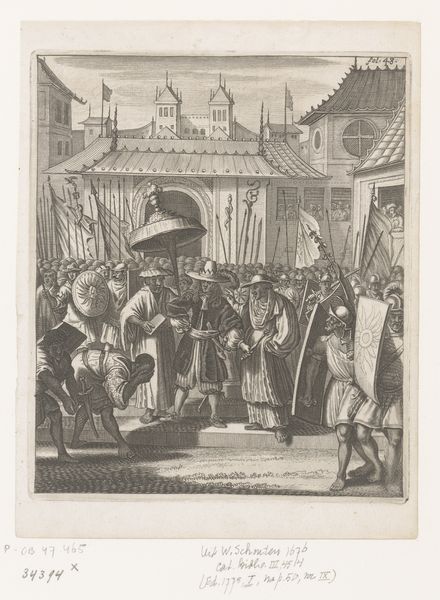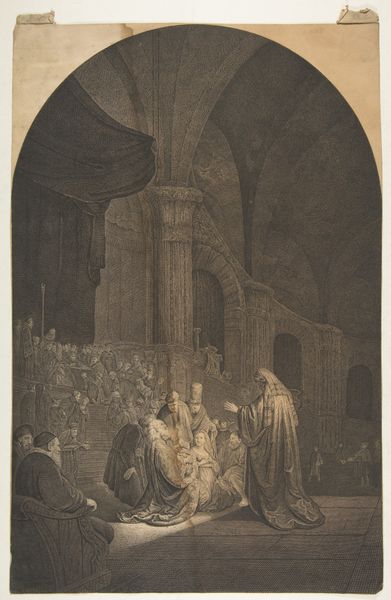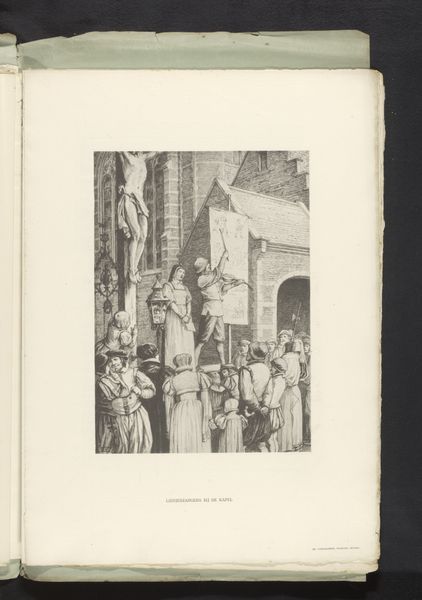
print, etching, engraving
#
neoclacissism
#
narrative-art
# print
#
etching
#
old engraving style
#
figuration
#
19th century
#
history-painting
#
engraving
Dimensions: height 243 mm, width 180 mm
Copyright: Rijks Museum: Open Domain
Editor: This is Jean-Pierre Norblin de la Gourdaine's engraving, "Diogenes en Alexander de Grote," created sometime between 1755 and 1830. It's rendered in etching and engraving, creating a kind of old, storybook aesthetic. It seems like a pretty classic composition, staging a meeting between the figures right in the foreground. What strikes you when you look at this print? Curator: Considering Norblin's known history, let's examine the economic factors impacting the production of prints in the late 18th century, a time when printed materials were increasingly influential as both vehicles for information and political commentary. Do you notice the stark contrast between the opulence of Alexander and Diogenes’ apparent poverty? Editor: Definitely, it's like the staging of wealth and simplicity. Curator: How do you think the material conditions and available techniques influenced the creation of this artwork? What possibilities did printmaking, specifically engraving, unlock for artists in terms of reproduction, dissemination, and reaching a broad audience? Editor: So, like the original "copy/paste?" Allowing him to make political or philosophical arguments accessible to a wider, perhaps even a working-class audience? Curator: Precisely. Think about the labor involved in creating the copperplate, and the multiple impressions it allows. Doesn't the accessibility inherent in the medium itself speak volumes about the democratization of knowledge and critique of power during this time? Editor: I never considered it in that way before! Now the choice of printmaking, not just the image, feels like part of the message. Curator: Indeed! It reveals much about the artist’s intent and the period’s complex relationship with both classical ideals and social realities.
Comments
No comments
Be the first to comment and join the conversation on the ultimate creative platform.
